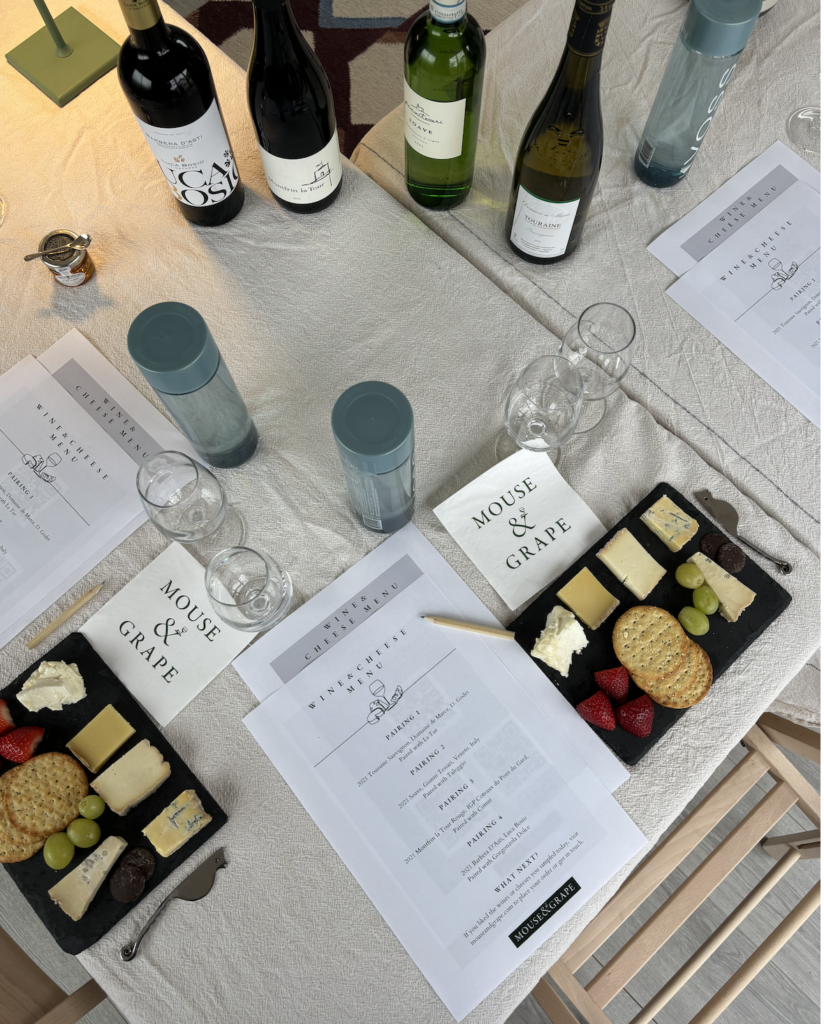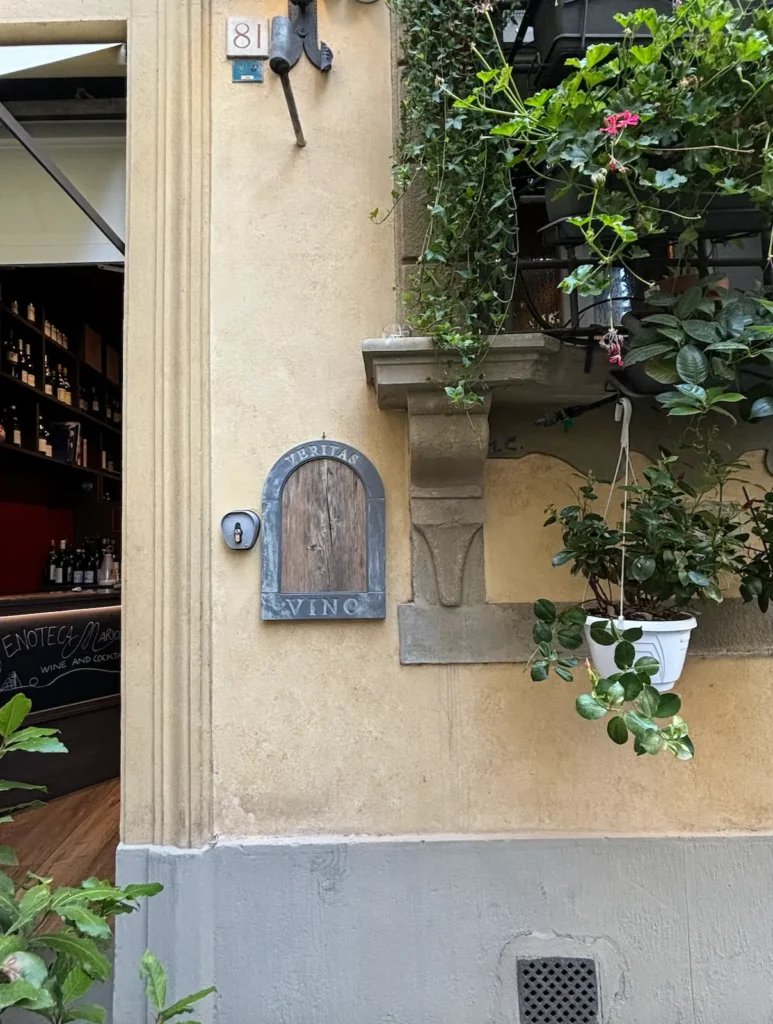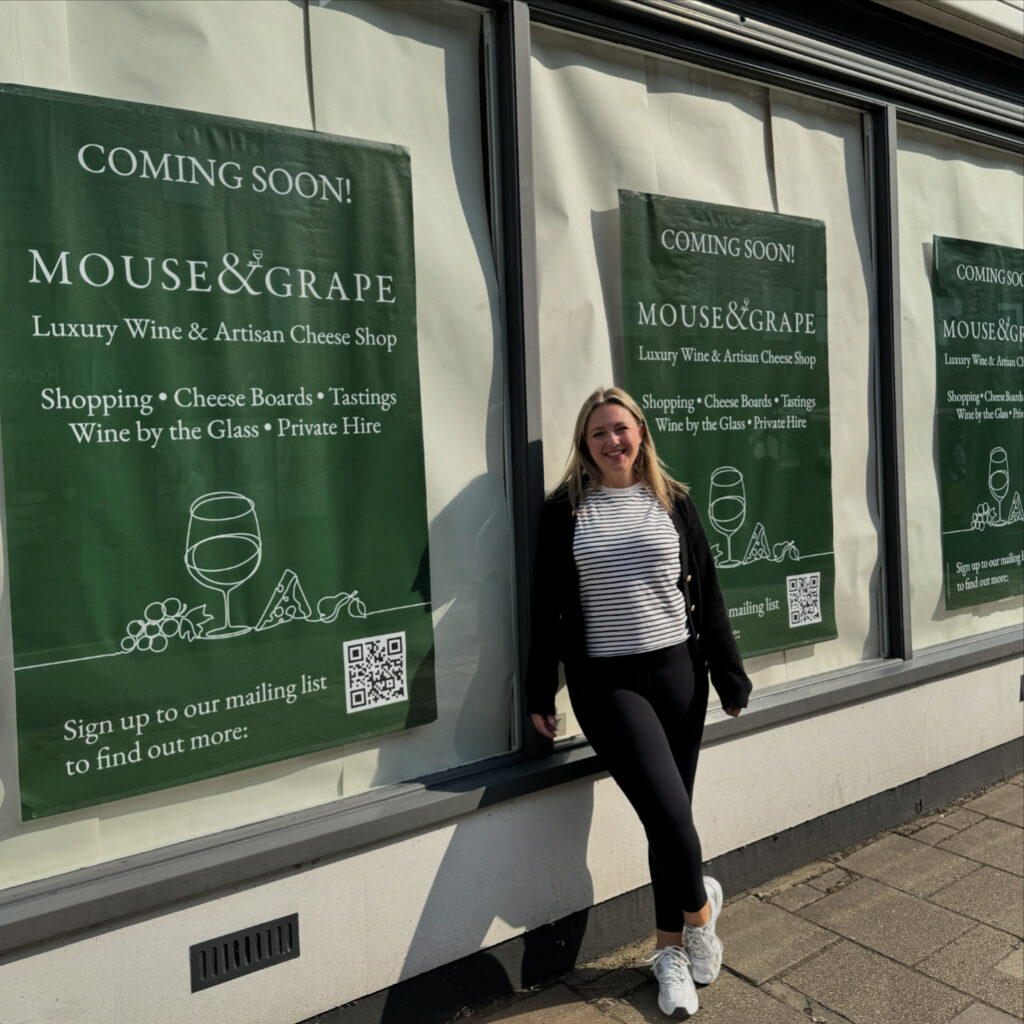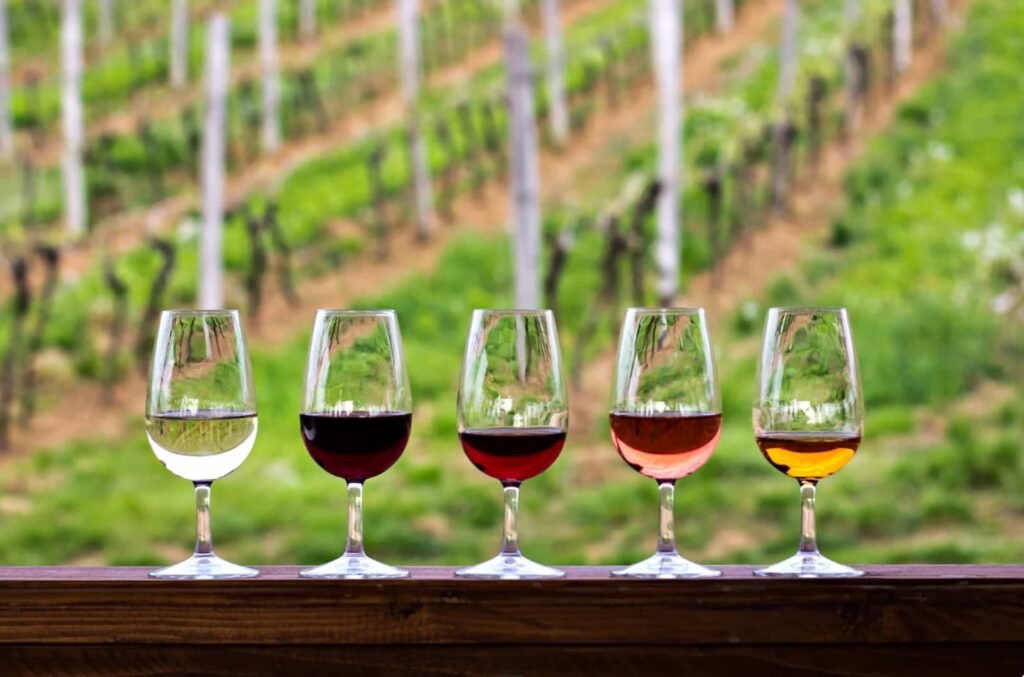Have you ever bitten into a piece of cheese and wondered why you’re biting into crystals?
The first time I experienced these crystals was when I started working with Jessica – I tasted the Mouse & Grape aged Comté – paired with a 2021 Montfrin la Tour Rouge, IGP Coteaux du Pont du Gard – and dare I say my life was changed. This bright, peppery red wine from Languedoc Rousson was paired with a cheese that was both nutty and fruity — it was certainly a memorable tasting experience for me. While I had tried aged artisan cheeses before, this was my first time biting into a cheese with salty crystals – which Jessica explained can be a sign of a high-quality cheese.
Earlier this month I invited some friends over, so naturally I made a cheese board to accompany the evening. One of the cheeses I selected was a 1000-day-aged Gouda. This cheese had a fabulous addictive caramelized flavour, and once again it had those sumptuous crystals, reminding me of my first experience with aged Comté.
It got me thinking, where exactly do these crystals come from? And why are they a sign of high-quality cheese?

This was the first Mouse&Grape tasting where I experienced the delectable crystals.
Understanding Crystals in Cheese
Crystals can take years to form depending on the type of cheese, so you will only find them in aged, mature cheeses. The reality is these processes are much more complex than they appear. When I questioned my friend, who is a food science expert, about these processes, he described the crystal formation as “thermodynamic mumbo jumbo” – so evidently very complex.
Crystals are often found in moist aged cheeses, such as Cheddar, Colby, Parmesan, Comté, Grana Padano, Gouda, or Pecorino Romano. This is because moisture content is a key factor in crystal formation, which can form both internally and externally. These specks are not mold, but rather an aggregation that occurs naturally in cheesemaking.
The Science
As I endeavored to understand the conception of crystals in cheese, my aforementioned friend recommended a few scientific articles to read as well. The first discusses the incomplete aggregation of curd granules, and the second discusses additional cheese-crystal research. I’ve linked both in case you are also interested in this topic. The process is wholly complex and has numerous determinants.
While I’m no expert, I’ve been fascinated by food science throughout my culinary journey. To give a brief explanation of these crystals, there are two primary types – calcium lactate crystals and tyrosine crystals.
Calcium Lactate Crystals
The first are calcium lactate crystals. These crystals form as bacteria break lactose into lactic acid. The lactic acid then combines with calcium to form calcium lactate crystals.
One source provides the following explanation about these calcium lactate crystals: “As lactic acid levels rise in the cheese they can begin to bind with calcium ions forming calcium lactate. As the calcium lactate levels rise they will eventually reach a point where they crystallize and become visible to us as crystals. These crystals can form on the surface of cheeses where moisture can collect… Loose-fitting packaging and temperature abuse can encourage moisture to form on the surface of the cheese leading to increased presence of crystals.”
Although they can be found in the interior, calcium lactate crystals are typically found on the exterior of cheeses, possibly looking like a powdery substance on the surface of a cheese. They don’t directly affect flavour but can be a sign that a cheese has been sufficiently aged.

On the Mouse&Grape Pecorino Al Tartufo, you can see little patches of white on the rind – these are calcium lactate crystals.
Tryosine Crystals
The second type is tyrosine crystals, which form from amino acids. Proteins are made up of amino acids and as this protein matrix breaks down, these amino acids (called tyrosine) can join together, forming small crystals.
One description explains: “Unlike calcium lactate which we attribute to intrinsic factors in cheese, tyrosine crystals seem to be linked to the activity of the culture Lactobacillus helveticus. This microbe is usually added to the aforementioned cheeses to encourage flavor formation. L. helveticus has a knack for breaking down peptides (i.e. protein chains) into free amino acids, tyrosine being one of them. As the tyrosine builds up it will eventually crystallize out. It’s still not fully understood though.”
There are several reasons why cheesemakers add cultures, but L. helveticus specifically is often added to produce sweet flavours in aged cheeses. L. helveticus increases the presence of amino acids by breaking down existing proteins — and these specific amino acids are not highly soluble in water so slight increases in the moisture content can lead to the formation of crystals.
In cheeses where tyrosine crystals are present, you may also see holes of varying sizes. As microbes in cheese die, they produce carbon dioxide gas which can expand to form crevices.
Tyrosine crystals tend to form in more distinct dense specks and create a distinct crystalline texture. Although it is up for debate, some claim these crystals increase perceptions of savouriness in cheeses.

In the incredible Mouse&Grape 24-month Aged Reypenaer Vsop Gouda, you can see the clear formation of tyrosine crystals throughout the interior with white clustered specks.
Final Thoughts
Cheeses make for a fascinating study for scientists since they are ever-evolving and composed of numerous interconnected organic compounds. Crystal formation, specifically, is still a topic being studied and understood.
From a tasting perspective, these crystals can be transformative. They add a contrasting texture to a cheese comparable to sea salt, creating a complex bite, especially when paired with wine. Given the number of variables in the creation of crystals, their presence can be a strong indicator of attentive cheesemaking and thus a high-quality product.
If you’re unsure what to look for, consider visiting your local cheesemonger to learn more (and have a taste)!
Arni Seth




